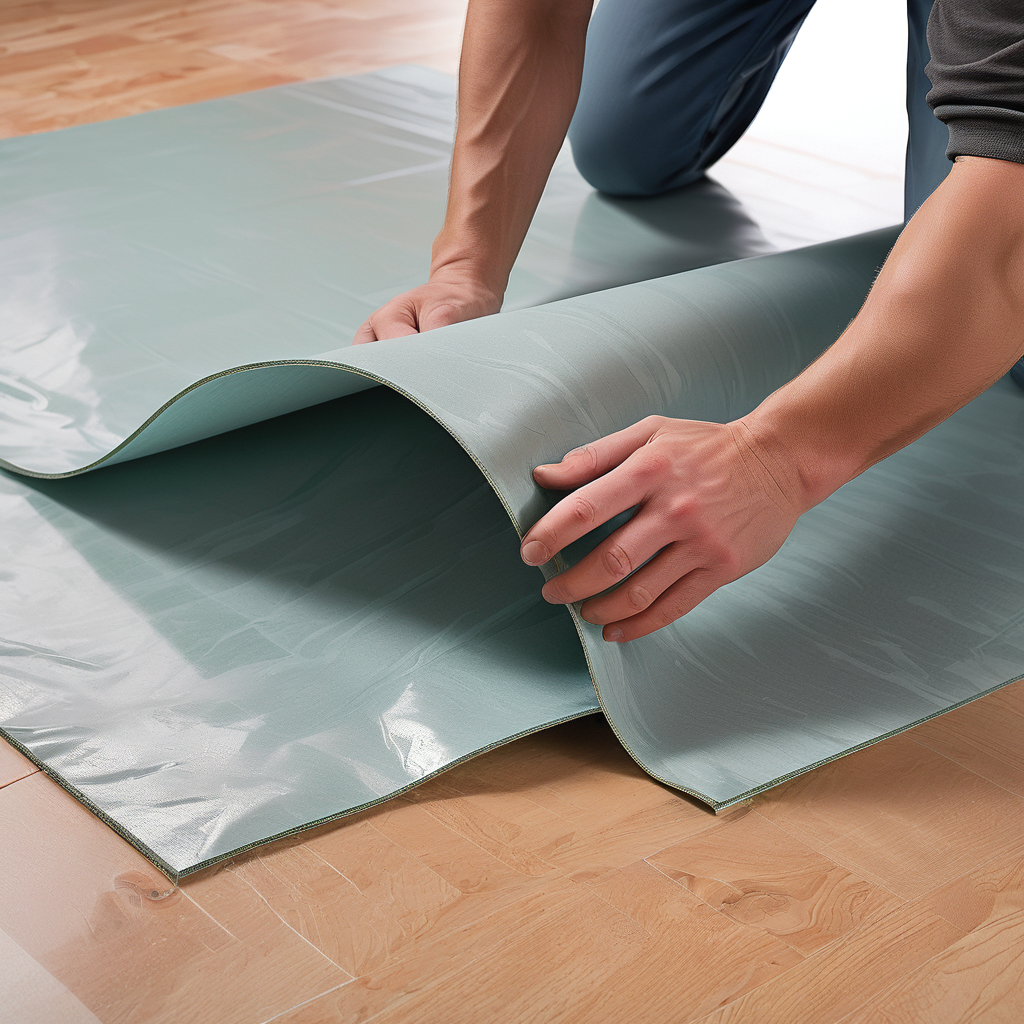
Luxury Vinyl Plank (LVP) flooring has gained immense popularity due to its durability, aesthetic appeal, and ease of installation. However, to maximize its benefits and ensure a flawless finish, the use of underlayment is often recommended. This article delves into the reasons why underlayment is essential for LVP flooring and how to choose the right one for your project.
What is Underlayment?
Underlayment is a thin layer of material placed between the subfloor and the LVP flooring. It serves several purposes, including providing a smooth surface for the LVP to lie on, enhancing comfort underfoot, and improving the overall performance of the flooring.
Benefits of Using Underlayment for LVP Flooring
- Sound Reduction:
Underlayment helps reduce the noise created by footsteps and other impacts. This is particularly important in multi-story buildings or apartments where sound transmission can be a concern. A good underlayment can absorb sound, making the space quieter and more comfortable. - Moisture Barrier:
Moisture can damage LVP flooring over time. Certain types of underlayment come with a built-in moisture barrier that prevents water from seeping up from the subfloor. This is especially useful in areas like basements, kitchens, or bathrooms where moisture is a concern. - Improved Comfort:
Underlayment adds a layer of cushioning, making the floor more comfortable to walk on. It can also provide thermal insulation, keeping the floor warmer in cold weather. - Subfloor Imperfections:
Even minor imperfections in the subfloor can affect the installation and appearance of LVP flooring. Underlayment helps to smooth out these imperfections, ensuring a more even and professional-looking finish. - Enhanced Durability:
By providing a stable and smooth base, underlayment can help extend the life of your LVP flooring. It reduces wear and tear, especially in high-traffic areas, by distributing weight and impact more evenly.
Types of Underlayment for LVP Flooring
There are several types of underlayment available, each suited to different needs and types of subfloors:
- Foam Underlayment:
Foam underlayment is lightweight, easy to install, and provides good sound absorption and cushioning. It is suitable for most residential applications. - Cork Underlayment:
Cork is a natural and sustainable option that offers excellent sound insulation and comfort. It is particularly effective in reducing impact noise and is a good choice for both residential and commercial applications. - Rubber Underlayment:
Rubber underlayment is highly durable and offers superior sound insulation. It is ideal for high-traffic areas and commercial spaces. It also provides excellent moisture resistance. - Combination Underlayment:
Some underlayments combine different materials to offer multiple benefits, such as foam with a built-in moisture barrier. These combination products can provide a convenient all-in-one solution.
Choosing the Right Underlayment
When selecting underlayment for LVP flooring, consider the following factors:
- Subfloor Type: Different subfloors (concrete, plywood, etc.) may require specific types of underlayment. Make sure to choose one that is compatible with your subfloor.
- Moisture Levels: If moisture is a concern, opt for an underlayment with a built-in moisture barrier.
- Sound Insulation: For multi-story buildings or apartments, prioritize underlayment with good sound absorption properties.
- Comfort Needs: If comfort underfoot is important, look for underlayment that offers good cushioning and thermal insulation.
Using underlayment beneath LVP flooring is a critical step that can significantly enhance the performance, comfort, and longevity of your floors. By choosing the right type of underlayment based on your specific needs and subfloor conditions, you can ensure a successful installation and enjoy the many benefits that LVP flooring has to offer. Whether you seek sound reduction, moisture protection, or added comfort, underlayment is an investment that pays off in the long run.
Cedar Hill St. Louis Jefferson County Olivette Kirkwood Ballwin Arnold Franklin County St Charles County Fenton High Ridge Dittmer Creve Coeur
